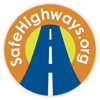Headlights on… Anthony “Tony” T. Furst

Current Company: Federal Highway Administration
Department: Office of Safety
Position/Title: Associate Administrator for Safety
Please describe your early aspirations/career goals that led to your current role as the Associate Administrator, Office of Safety at Federal Highway Administration.
I’d have to go back to my early days as a Petty Officer in the US Navy responsible for a frigate’s navigation team. I enjoyed being in a leadership role and being able to mold and lead a team that was competent, well respected, and did an exemplary job. The purpose, function, scale and scope of that job are very different from what I do today, but when all is said and done, the fundamentals and the objectives are the same – and with the Office of Safety I couldn’t be prouder.
How has your background aided your involvement in setting safety standards for the FHWA Office of Safety?
For fourteen years I worked in marine safety with the US Coast Guard inspecting commercial ships for compliance with US and international regulations all of which are geared toward safety. Toward the end of that career, I worked in USCG Headquarters developing guidance and regulations that affected marine safety in ways that are very comparable to what I now do with FHWA.
Safety must have been a major concern in your previous position as the Director of Freight Management and Operations at the FHWA. Can you describe how this position transitioned to your current role and the safety interests that both share?
The primary safety issue in the Office of Freight Management and Operations is with the safe operation of commercial motor vehicles; this is a responsibility FHWA shares with the Federal Motor Carrier Safety Administration (FMCSA). In the Office of Safety the scale and scope of the safety issues expanded to a much broader array of safety issues.
The FHWA Office of Safety promotes a group of nine safety countermeasures, can you discuss how these countermeasures were determined?
Based on the latest safety research, my Office selects nine proven countermeasures that show significant effectiveness in addressing intersection, pedestrian, and roadway departure safety issues but haven’t received wide-scale implementation. We believe these countermeasures deserve extra “visibility” and through our outreach efforts hope to achieve higher levels of deployment. Ultimately, however, the consideration and application of the most effective countermeasures is best accomplished through States’ and local agencies’ safety programs that use a data-driven approach to determine the most appropriate solutions to achieve the greatest safety gains.
Can you provide an update about the implementation of these nine proven safety countermeasures? What work continues to be done and what have we learned since the inception of tracking these measures?
Across the board, we have seen a positive response to our promotion of the proven countermeasures. While we track the levels of implementation of these measures across the country, my rattling off a series of numbers in this reply would be of little value to your readers. I suggest they visit our website at http://safety.fhwa.dot.gov/provencountermeasures/ and see for themselves.
What resources do you utilize to assist in your assessment of the optimal roadway safety regulations?
There is a wealth of information and resources that we tap into as we think through the best way to improve highway safety, and regulations is just one relatively small part of what we do. We tap research, data, and the professional competency of my Office and that of other stakeholders both within and outside of US DOT to develop safety countermeasures, provide technical guidance, promote proven technologies, etc. We routinely meet with a group we call the Highway Safety Partnership Venture (HSPV), where we draw on the capacity and professional input of safety stakeholders from across all of the 4E’s – engineering, education, enforcement and emergency medical services.
How significant is it for Safety Service Patrol vehicles to be identifiable apart from maintenance crews, state police, ambulances and fire trucks? Why is this distinction important?
All of the mentioned services have distinct missions and needs that need to be identified as such to road users. The distinction is important because it allows a disabled vehicle owner or road user involved in a crash to know and feel comfortable with the type and level of expertise behind the professional approaching them in hazardous and difficult situations. Service patrol vehicles need to be as readily identified as other public service vehicles.
Can you discuss some varying visibility issues that are prevalent across the nation and identify solutions to aid in roadway and vehicles visibility?
Research clearly shows that adequate visibility is an important factor in reducing crashes. This is across the board, from pavement markings, to signs, to vehicles, and to pedestrians and bicyclists. While the degree of “brightness” needed is a complex issue and the subject requires ongoing conversations. Maintaining reasonable levels of retroreflectivity on traffic control devices and pavement markings can help significantly. But it’s not just a function of the highway agencies, individuals can and should help too by ensuring that they wear material or devices that will make them more visible when they use the roadways and crossing streets where there are markings and illumination that improve their safety.
How do you think the rules and regulations pertaining to visibility guidelines will change over the next decade?
I can’t say, but we always reserve the right to get smarter and as technology and research advances we will seek to deploy, by whatever the best means are, the best information we have.
What is the one theme you would want to reinforce in Safe Highway Matters’ forum?
Personal responsibility – engage in behaviors that keep you and those around you safe when you use the transportation system. The professional community will do all we can to keep the transportation system as safe as we can possibly make it, but each and every user needs to do their part too. Be focused when you’re on the system, don’t engage in behavior that distracts your attention; be aware, know what’s going around you; be alert, avoid conditions that impair your ability to navigate the system safely; be smart, wear your seat belt or your helmet if you ride a two-wheeled vehicle; be courteous, you’ll get where you need to go, just calm down; and don’t hesitate to educate those that need it, particularly children. These are all behaviors we know, we just need to act that way.
Back to Safe Highway Matters: Fall/Winter 2013
